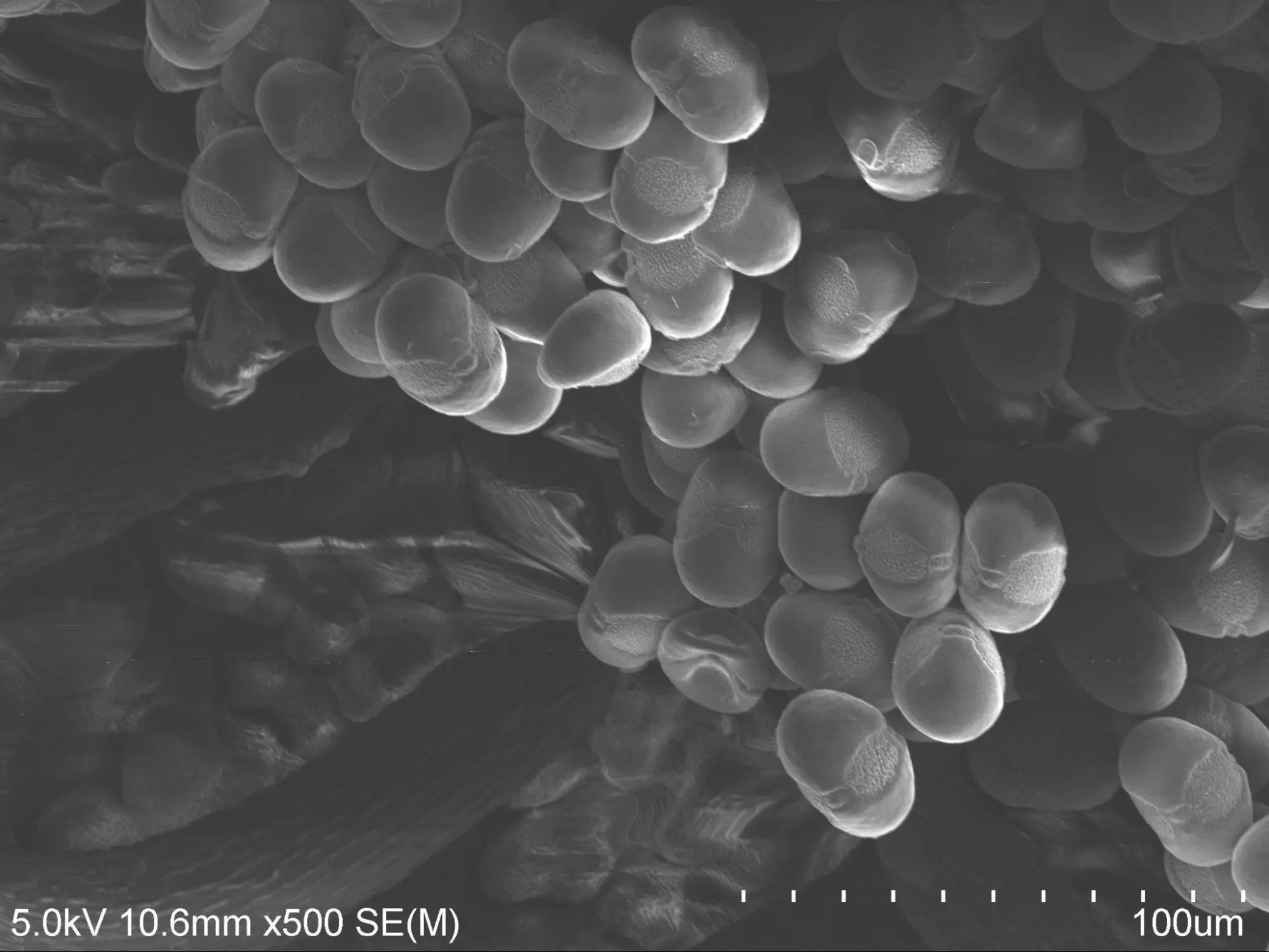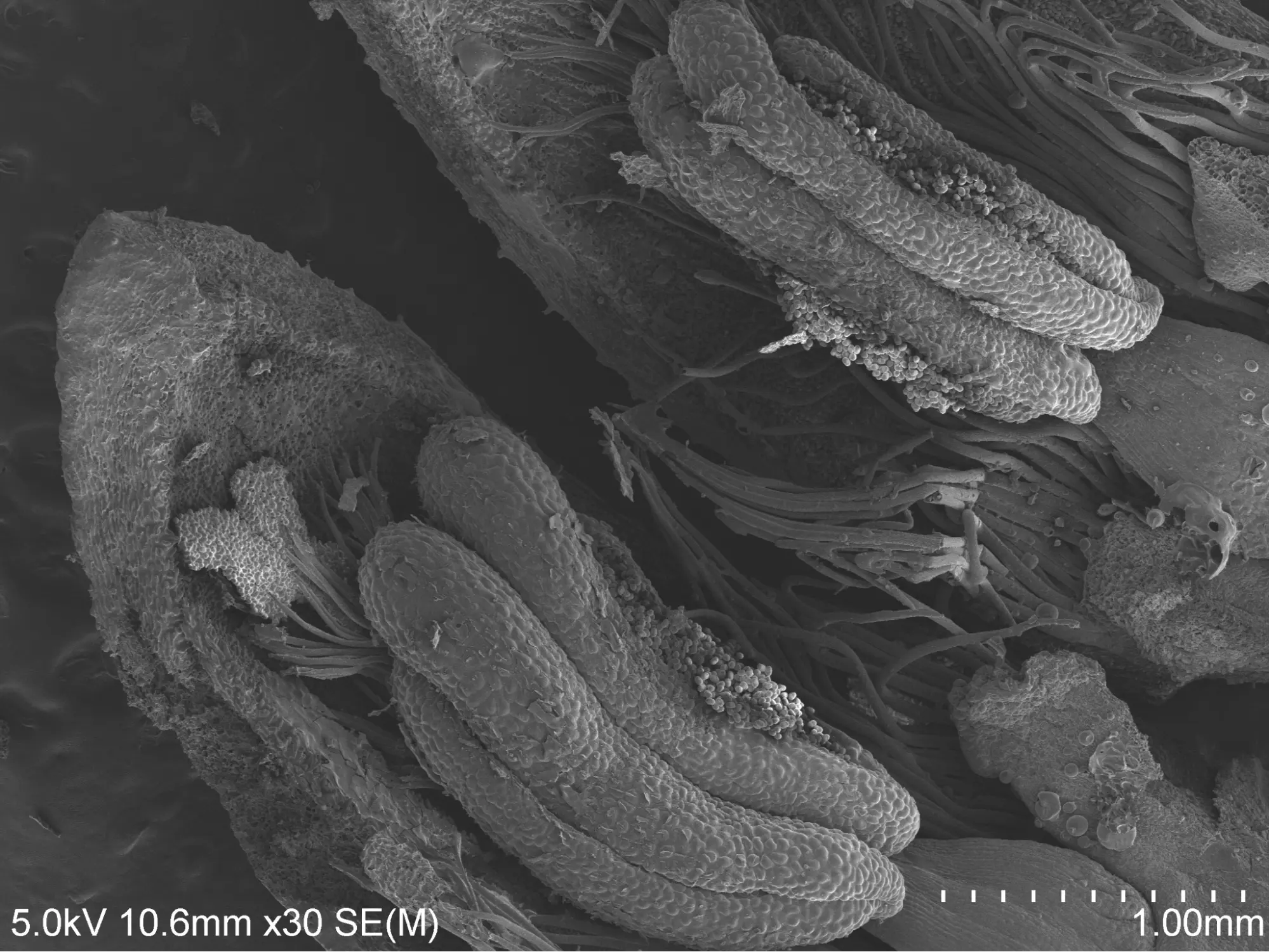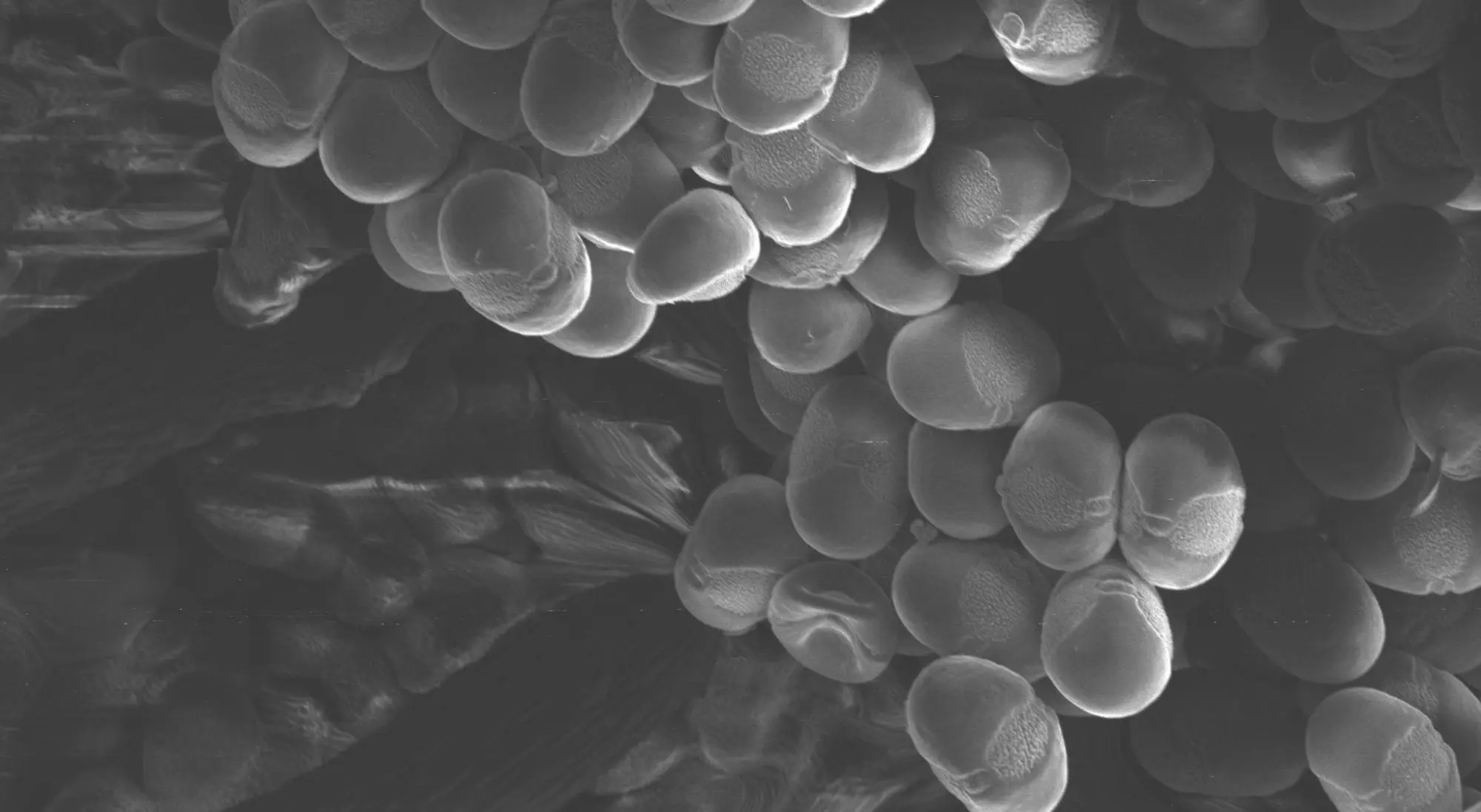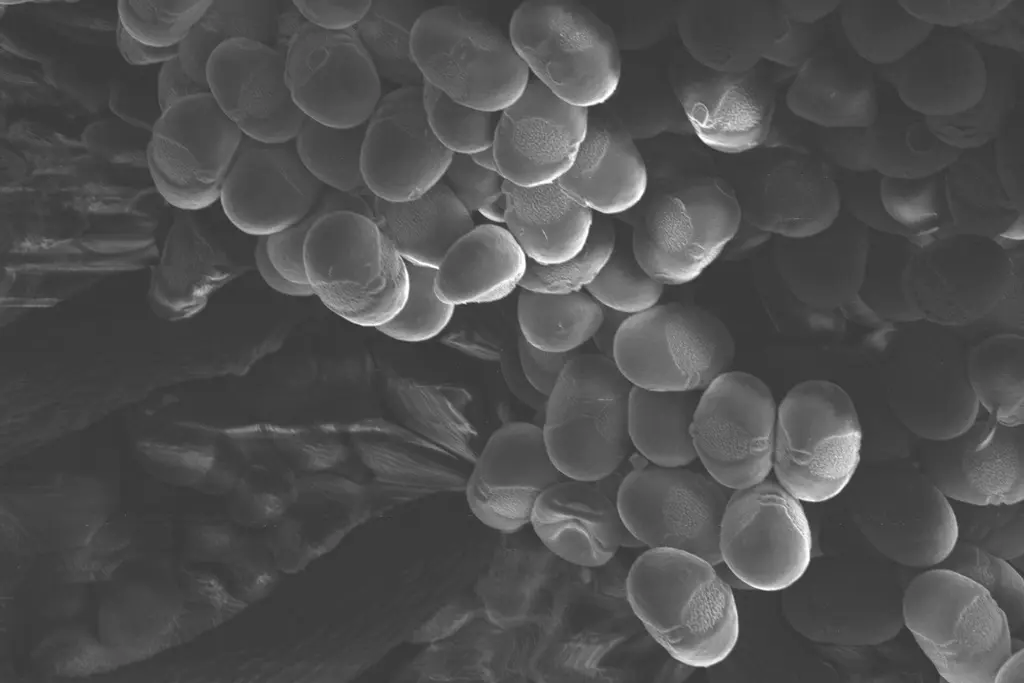Background / justification
Sandalwood is a hemiparasitic tree of the genus Santalum L. (Santalaceae). Two lineages of Hawaiian sandalwoods are believed to have originated from the South Pacific. A red flowered clade composed of Santalum pyrularium A. Gray, Santalum freycinetianum Gaudich., and Santalum haleakalae Hillebr. This clade is most closely related to species of Santalum L. from French Polynesia and Ogasawara Islands. The white flowered clade composed of Santalum paniculatum Hook. & Arn. and Santalum ellipticum Gaudich. are most closely related to species of Australasian origin. Santalum involutum H. St. John is a federally listed endangered species endemic to Kauai likely of an ancient hybrid origin. The introduced Indian sandalwood (Santalum album L.) readily hybridizes with the endemic S. ellipticum Gaudich. These hybrids spread readily and pose a threat to endemic members of the genus where their ranges intersect.
As part of his PhD research in the School of Life Sciences at the University of Hawai‘i at Mānoa, Solomon Champion is studying the genetics of the endemic Hawaiian sandalwoods.
Project objectives
- Ascertain the degree of interspecific hybridization and introgression among Hawaiian sandalwood species and the introduced Indian sandalwood (Santalum album L.).
- Develop molecular marker assisted protocols for evaluating introgression and hybridization within Hawaiian sandalwood species for the purpose of verifying stock types prior to seed orchard or plantation implementation.
- Investigating the evolutionary relationships between biogeography, population genetics, speciation and ecosystems services (i.e., pollination and dispersal).
- Explore the links, if any, between genotype and santalol production within sandalwood heartwood.
- Explore the coevolutionary relationship, if any, between upland Hawaiian sandalwoods (ʻiliahi) and Hawaiian forest and seabirds.
Approach
Scanning Electron Microscopy (SEM)
SEM was used to visualize floral structure and pollen grains of Santalum ellipticum to better understand the pollination biology of Hawaiian sandalwoods within section Hawaiiensia. Section Hawaiiensia is represented across the Hawaiian Islands by Santalum ellipticum and on the Big Island by two varieties, Santalum paniculatum var. pilgeri from Kona and Hualalai, and Santalum paniculatum var. paniculatum from Kilauea.


Key accomplishments
Previous genomic and population studies clearly show the pollen of Santalum ellipticum is interfertile with both sections of Hawaiian sandalwoods, Hawaiiensia and Solenantha, with the potential for creating viable hybrids across all the main Hawaiian Islands.Repeated hybrid speciation appears to underlie Hawaiian sandalwood biodiversity. Populations of ʻiliahi across the islands are ad-mixed with neighboring island species in most cases. It is likely that the coastal Hawaiian sandalwood (Santalum ellipticum) ʻiliahialoe has facilitated significant gene flow throughout the islands in the distant past. Genotypes of the presumably derived S. paniculatum remain consistent with the coastal ʻiliahialoe, suggesting little genetic change during the past 0.5 million years.
Santalum album hybridizes regularly with Santalum ellipticum where it has been introduced. Indian sandalwood trees are thus compromising the genomic integrity of Hawaiian sandalwood species. It is of interest that the present trend of unidirectional gene flow among ʻiliahi seems to maintain what have likely been long established patterns of gene flow. Historically the sandalwood trade in the Hawaiian Islands began around 1810. Large areas of forest were effectively overharvested, leaving fragmented populations across the archipelago. In its wake people were encouraged to plant Indian sandalwood. Since that time hybridization between Hawaiian and Indian sandalwood species has been slowly on the rise. Hybrid individuals can be easily observed naturally recruiting all along Lēʻahi crater on Oʻahu. Surveys have also revealed individuals of Santalum album recruiting in forest reserves in the Southern Koʻolau range. Potentially jeopardizing seed collecting efforts for Santalum freycinetianum reforestation on Oʻahu as well.
Future plans
Establishing verified Hawaiian sandalwood seed orchards remains a priority. Continued technical support for genetic testing of Hawaiian sandalwoods using Sequence-Related Amplified Polymorphisms (SRAP) or amplicon sequencing is available by request. Tree breeding programs for Hawaiian sandalwoods should utilize molecular techniques for vetting seed stock collected from forest reserves as a clear risk of Santalum album introgression has been identified.
Partners / stakeholders / collaborators
- Hāloa `Āina
- Tropical HTIRC
- Kealakekua Mountain Reserve
- Hawaiʻi Division of Forestry and Wildlife
- Biological EM Facility, Pacific Biosciences Research Center


